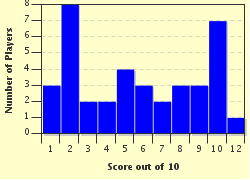Quiz Answer Key and Fun Facts
1. Who is better to start with than the anthropologist who founded the modern discipline of anthropology.
He is called "the father of modern cultural anthropology".
His most famous work is "The Mind of Primitive Man".
Who is he?
2. This person is one of the most respected anthropologists.
He is the founder of "Structuralism".
His most famous works are "The Raw and the Cooked" and especially "The Savage Mind".
Who is he?
3. This female anthropologist was one of the first to get international fame for her work on culture and personality.
One of her most famous works is "Patterns of Culture", for which she did extensive fieldwork among the Native American tribes.
"The Chrysanthemum and the Sword", another one of her most well known works, gives us more insight into the Japanese culture.
Who is she?
4. In the 1990s there was a heated academic dispute between anthropologists Gananath Obeyesekere and Marshall Sahlins.
What was this dispute about?
5. Which work, written by Margaret Mead, was a best seller book and is one of the most influential and most-read works in the field of anthropology? It is based on her field trips to the South Pacific where she lived with the local people to study their culture.
6. This important archeological find was discovered by paleoanthropologist Mary Leakey in Tanzania.
It's one of the earliest and best preserved evidences for physical activity by human ancestors and it changed the view on how we look and thought about primates.
What is this extraordinary find?
7. This anthropologist was the founder of social anthropology, and also one of the first proponents on the importance of fieldwork and participant observation.
His most famous and influential work is "Argonauts of the Western Pacific".
Who is he?
8. This American anthropologist was one of the most important thinkers on anthropological theory during the second half of the 20th century.
He was strongly imbedded in the antiwar movements during the Vietnam War, and he is the creator of the teach-in as a form of protest.
His most famous work is "Stone Age Economics".
Who is he?
9. This anthropologist was very influential for anthropology in France. He has written works on a great variety of subjects including sacrifice, methodology and personhood.
His most famous work is "Essai sur le Don", better known as "The Gift".
Who is he?
10. This American anthropologist is best known for his work on symbols and the term "Thick Description" in describing his methodology.
One of his most influential essays is "Deep Play: Notes on the Balinese Cockfight".
Who is he?
Source: Author
NielD
This quiz was reviewed by FunTrivia editor
looney_tunes before going online.
Any errors found in FunTrivia content are routinely corrected through our feedback system.


